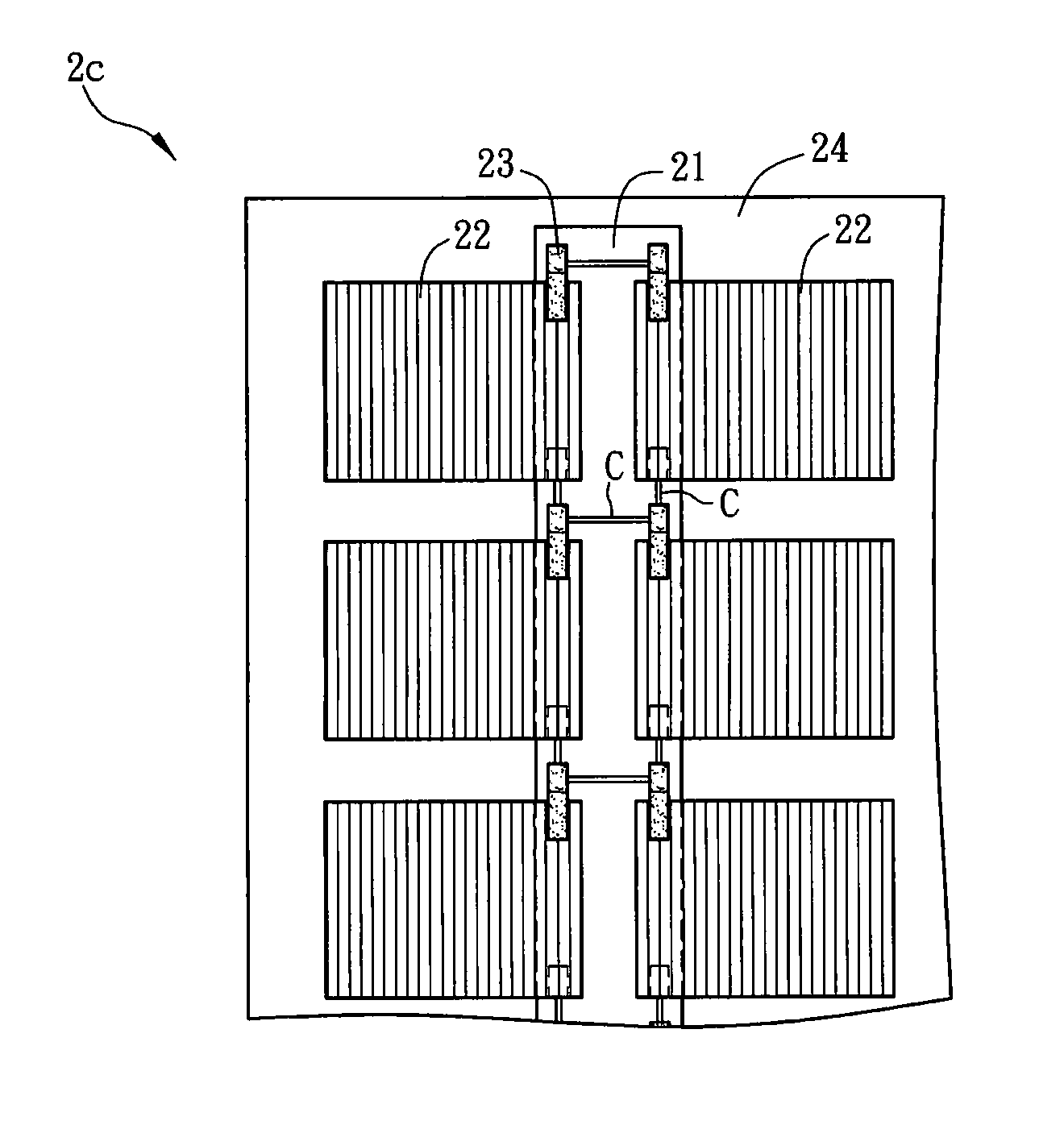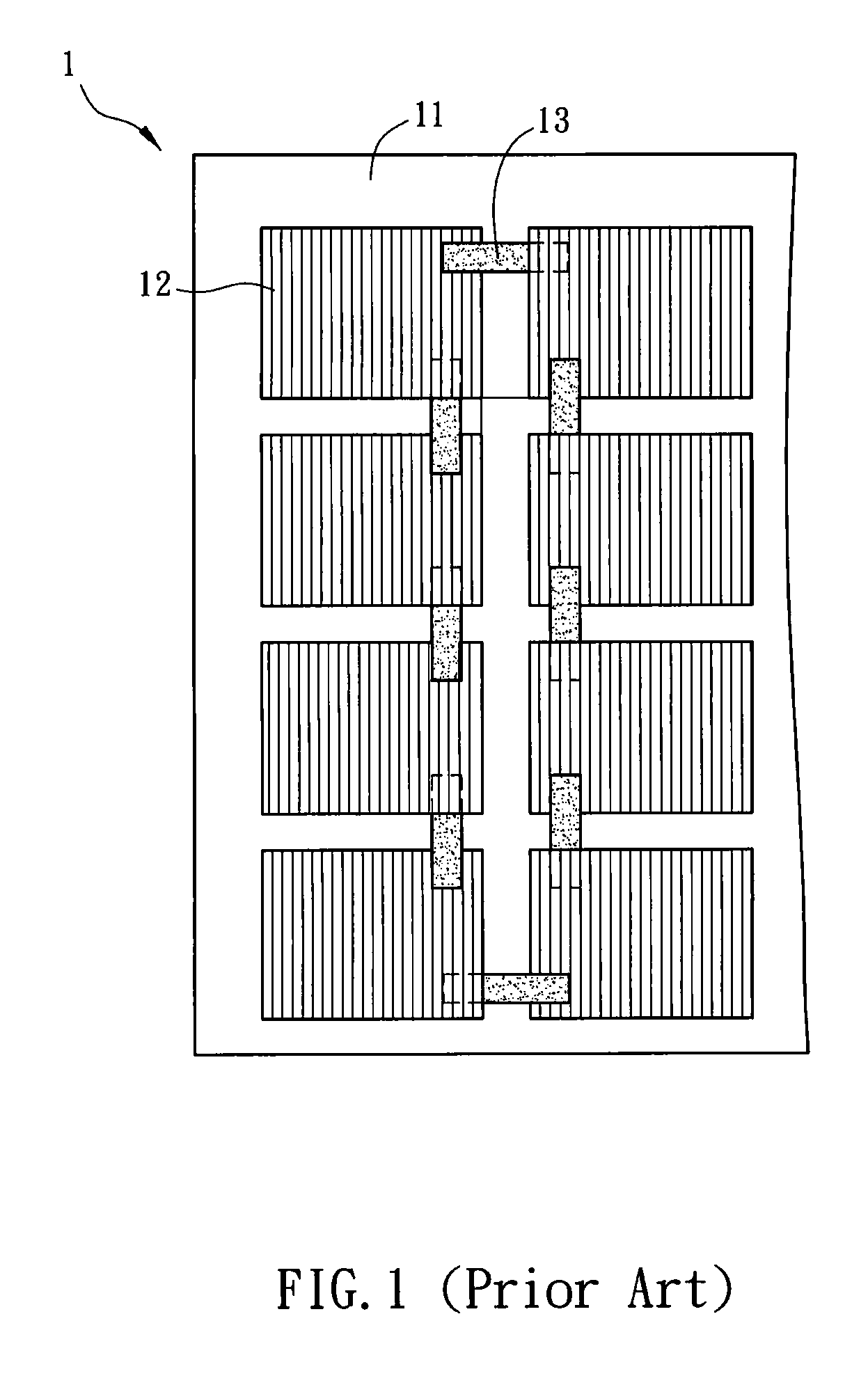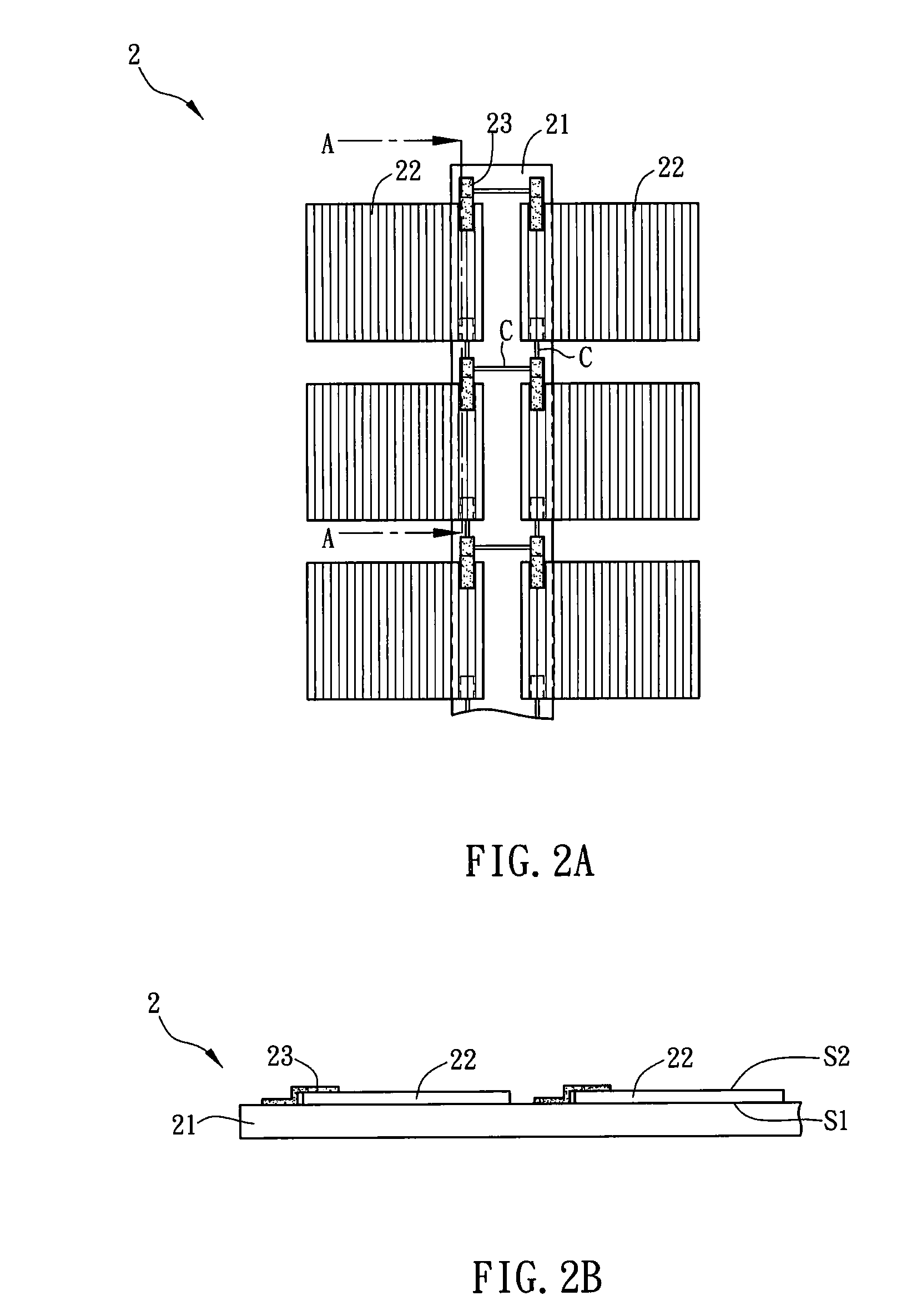Solar cell module
a solar cell module and module technology, applied in the field of electronic modules, can solve the problems of deteriorating manufacturing efficiency, increasing manufacturing cost, and deteriorating reliability of solar cell modules, so as to improve product reliability, improve manufacturing efficiency, and reduce cost
- Summary
- Abstract
- Description
- Claims
- Application Information
AI Technical Summary
Benefits of technology
Problems solved by technology
Method used
Image
Examples
Embodiment Construction
[0021]FIG. 2A is a schematic diagram showing a solar cell module 2 according to one preferred embodiment of the invention. FIG. 2B is a sectional schematic diagram showing the solar cell module 2 along a line A-A in FIG. 2A. The solar cell module 2 includes a circuit board 21 and a plurality of solar cell elements 22.
[0022]The circuit board 21 may be made of glass, sapphire, quartz, or plastic.
[0023]The solar cell element 22 may be a photovoltaic cell which may be a thin film solar cell element, a mono-crystalline silicon solar cell element, a poly-crystalline silicon solar cell element, or an organic solar cell element. The organic solar cell element may be a dye-sensitized solar cell element.
[0024]The solar cell element 22 is connected with the circuit board 21. The solar cell element 22 is partly fastened to the circuit board 21 and is partly protrudent from the circuit board 21. In other words, the solar cell element 22 is not fully disposed on the circuit board 21, and only par...
PUM
 Login to View More
Login to View More Abstract
Description
Claims
Application Information
 Login to View More
Login to View More - R&D
- Intellectual Property
- Life Sciences
- Materials
- Tech Scout
- Unparalleled Data Quality
- Higher Quality Content
- 60% Fewer Hallucinations
Browse by: Latest US Patents, China's latest patents, Technical Efficacy Thesaurus, Application Domain, Technology Topic, Popular Technical Reports.
© 2025 PatSnap. All rights reserved.Legal|Privacy policy|Modern Slavery Act Transparency Statement|Sitemap|About US| Contact US: help@patsnap.com



